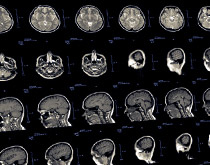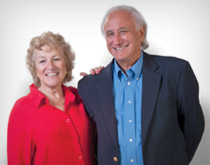
A neurosurgeon operates on a patient who suffered an aneurysm. One wrong move can cause untold complications. To help ensure nothing goes wrong, the surgeon uses the Intraoperative Neurophysiological Monitoring System developed by Pittsburgh-based Computational Diagnostics, Inc. (CDI). It allows a remote technician to watch nervous system activity, in real time, and provide constant feedback to the surgeon, letting him know if he’s getting off track.
The start of that technology traveled cross-country in a van, back in 1976.
In those days on the West Coast, Sharon Enos Sclabassi was first and foremost a mom while her husband, Robert Sclabassi, was a biomedical engineer. Enos Sclabassi had studied to be a CPA. Then came the couple’s four children, so she put her career on hold. Although she somehow found time to volunteer at the local YMCA, working with East Los Angeles gang members. Once her children reached school age, she started taking classes at a community college, eyeing a degree in social psychology. Then her husband received a phone call from Carnegie Mellon, asking whether he would be interested in joining the faculty there. Sclabassi had begun developing mathematical models and computer software to map complex systems, and he was interested in applying that research to neurology and biomedicine.

“When I visited, I discovered a place that had this intersection of everything I was interested in,” Sclabassi recalls. “And a culture that didn’t bat an eyelash at me doing engineering at CMU, getting a medical degree from Pitt, and working with computer scientists and entrepreneurs on applying my research toward neurological patient care.” They made the move east, which enabled Enos Sclabassi to continue her studies at CMU and earn her bachelor degree in 1977, graduating as a member of Phi Kappa Phi and going on to earn her PhD degree.
When Sclabassi felt ready to commercialize his research, he says, the university provided helpful assistance, including introductions to potential investors and partners. The support was especially vital, he says, because the technology was so new that in applying for approvals to the FDA, he had to explain the Internet to examiners. After he formed CDI, his wife stepped in. Given her CPA training, she kept the company’s financial records; plus, using her social psychology background, she had a knack for building relationships, which helped get the attention of hospital officials.
“That work [volunteering at the YMCA] taught me patience, how to deal with people, how to handle curveballs. And, honestly,” she laughs, “dealing with some administrators isn’t all that different than dealing with East LA gang members.”
Even her experience as a homemaker came in handy—she visited ORs with both the technology and some homemade cookies for the surgeons and administrators.
Eventually, she would hold the titles president and CFO, with her husband serving as CEO and chairman of the board. And CDI would become a pioneer in the field of telemedicine, recognized twice by Computer World and the Smithsonian awards and described by Tom Peters, acclaimed author and business consultant, as the wave of the future.
—Bradley A. Porter (DC’08)
This university initiative includes a portfolio of five campus incubators that help turn campus innovations into sustainable new businesses. Home to more than 100 research institutes and centers, the university’s award-winning professors and students produce an average of 15-20 new companies each year, such as Clearspring Technologies, which spurs both economic growth
and job creation. Learn more: www.cmu.edu/startups



